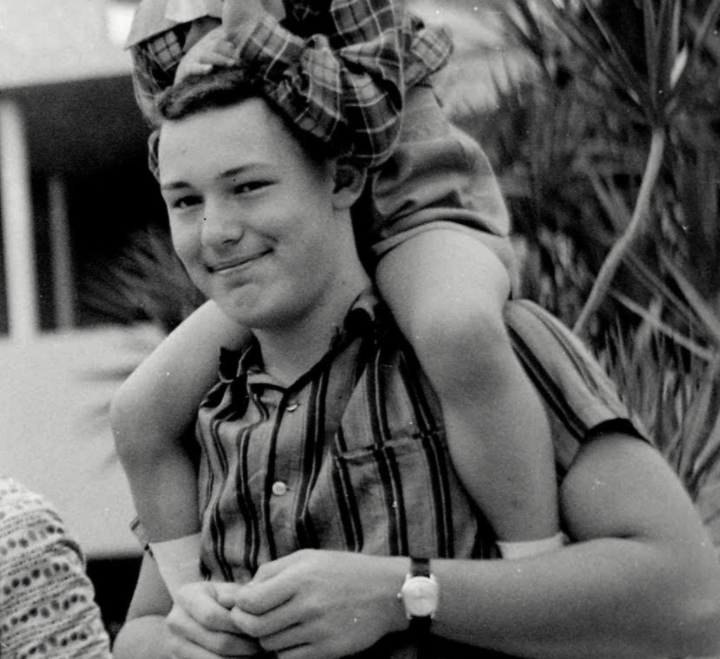BarrieToday welcomes letters to the editor. Send your letter to [email protected]. Please include your daytime phone number and address (for verification of authorship, not publication). The following is a first-hand look at quarantine for scarlet fever in the 1950s through the eyes of Barrie resident Peter Bursztyn.
*****************************
It's Montreal in the early 1950s and doctors still made house calls.
If speed-dial had existed, my Polish refugee parents would have had Dr. Gavsie at the top of their list.
Few kids love doctors, but Dr. Gavsie was a pediatrician with a lovely bedside manner for kids, and for their parents.
As a child, I was determined to collect the complete set of kid's disease, from mumps and chicken pox to childhood asthma and rubella.
Those were the pre-vaccination days when, if a neighbour’s child had chicken pox, a “chicken pox party” was held to which other children were invited so they could get it, too.
Many of these childhood diseases are far more serious if caught by adults. A friend was stricken by mumps in his late-30s. After six weeks away, he finally returned to work. He had become completely deaf in one ear, but considered himself lucky to have gotten away so lightly!
Anyhow, one day when I was ill (yet again), Dr. Gavsie announced that it was scarlet fever. At the time, this was a notifiable disease. Cases had to be reported to the public-health authorities. They visited my home, gave my parents instructions and quarantined the house.
An official notice was taped to the front door stating that scarlet fever was inside and barred entry to anybody but my parents.
Inside the house, I was confined to my bedroom; only allowed out to use the (one and only) toilet. My mother would place a
food tray in the corridor outside my room. I took this in and ate my meal – alone.
My father put books in the corridor for me to read. Television was rare then and we did not have one. I spent my days reading whatever he put out. I particularly remember Henrik van Loon’s The Story of Mankind, a thick, heavy book beautifully illustrated with line drawings. I read it twice!
I also read the bible from cover to cover, and argued about it with my dad (after the quarantine).
Later, my bible opinions got me booted out of Sunday School, apparently for arguing with and contradicting the teacher ... at age 10!
I also greatly enjoyed P.G. Wodehouse’s books describing the adventures of Bertie Wooster and his butler, Jeeves.
My dad had eclectic reading habits; he bought second-hand books in quantity to help teach himself English.
My confinement lasted a month. I remember being seriously annoyed because that was the entire month of the school Easter
break. I could hear children playing on our street while I could only stare at the four walls of my bedroom, or look out the window at the (empty) back yard, and continue reading.
At the time, I did not really understand why I was confined to my room when it was sunny and warm outside. I was told that
others could get scarlet fever from me if I went out. Since my case of the disease was very mild (Dr. Gavsie told me!), I could not understand what was wrong with others getting it from me.
I have not given any thought to my quarantine experience for over 65 years; not until COVID-19 arrived to mess with our lives.
However, scarlet fever had been a killer disease (25 per cent mortality in 1900) until antibiotics became readily available after the Second World War. That probably explains why it was still a notifiable disease requiring quarantine when I became its victim.
Although there still is no vaccine, Streptococcus pyogenes, the cause of the infection, readily succumbs to penicillin, and rarely caused death in the second half of the 20th century.
Today, the disease is barely mentioned, and probably kills nobody.
However, my memory of my quarantine is worth mentioning today. Then, when certain illnesses were considered serious, public-health officials had the power to quarantine sufferers.
They did not hesitate to use these powers. Quarantine was then the most effective – in some cases, only – means of checking the spread of disease. I have no way of knowing this, but I presume that public-health officers visited all my known contacts, and checked them for scarlet fever.
And that points the finger at Ontario’s sorry record of COVID-19 testing. We lag other provinces and territories in testing. Relative to our population we have carried out half the number of tests run by the rest of Canada!
Since we do so little testing, we cannot possibly be doing a good job of chasing the contacts of positive cases, and testing these people with a view to quarantining them.
The bottom line is very simple: Testing and quarantining individuals is less costly than closing retail outlets and far less damaging to Ontario or Canada than shutting down whole sectors of our economy.
Premier Doug Ford wants to ramp up testing, and that’s probably a good thing. But it will only work if testing is used to identify
and quarantine all the contacts of an infected person. With a 24-hour turnaround of the test results (doable now that the testing backlog has been cleared), most people will be liberated after just one day under quarantine – and these folk can return to work.
But, of course, this can only work if Ontario changes its procedures and begins to test people who display no symptoms!
Peter Bursztyn
Barrie
*****************************



